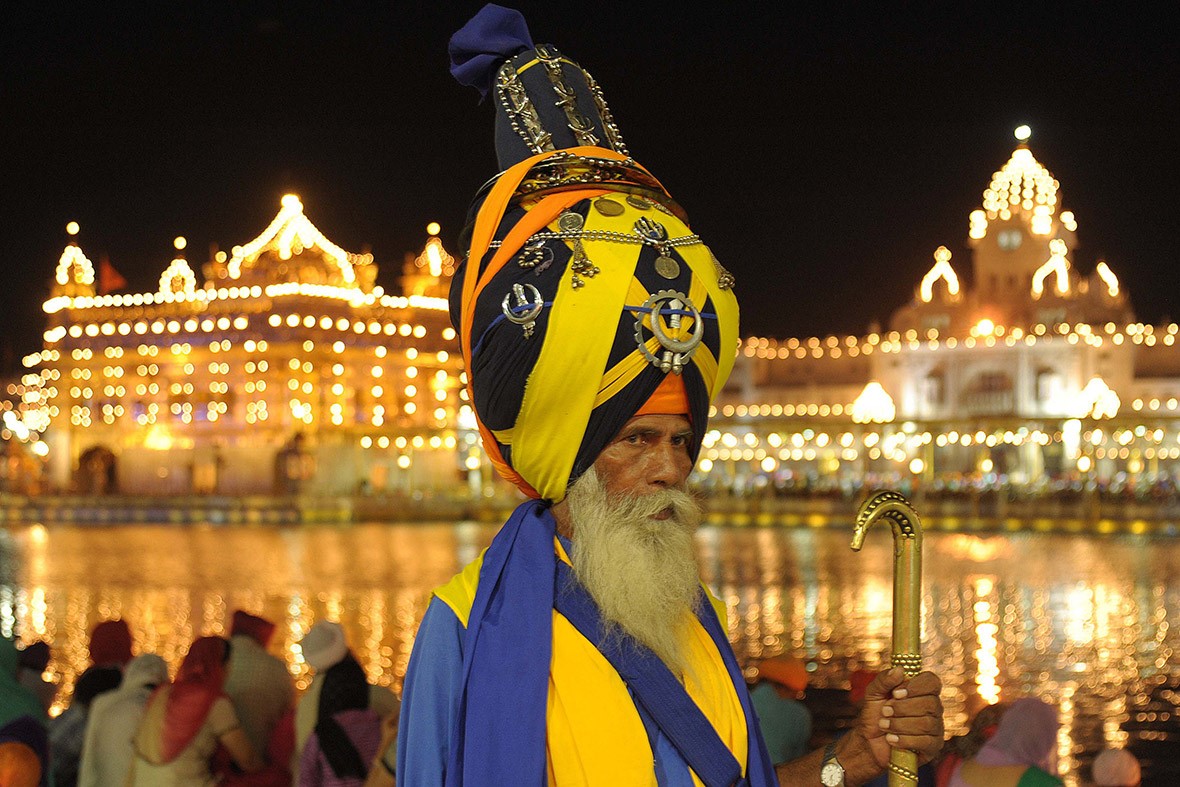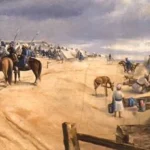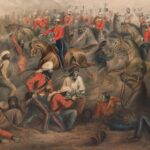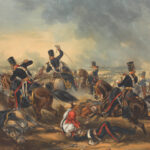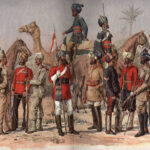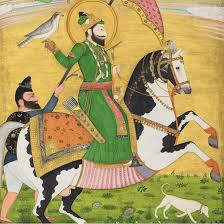The Nihang Sikhs are a branch of Sikhism. They are effectively one of the last remaining modern-day warrior practices. Nihang directly means “crocodile.” They call themselves the “Akaali,” which signifies “immortal army” in Arabic. They’ve spent their entire lives defending their beliefs. Their customs have altered relatively little over the previous 300 years, and they are renowned for their martial arts, sword-fighting skills, military expertise, and vibrant blue dress. They were founded by later Sikh Guru prophecies to protect the vulnerable (at a time when large numbers of Hindus were being slaughtered by Mogul invaders) and to guard Sikh Gurdwara shrines.
Nihangs are a beautiful sight to behold. The warriors, accented with blue gowns with tall and hefty turbans embellished with Sikh insignia and armed with ancient weaponry such as swords, spears, axes, and shields, harken back to a bygone era. They have kept their garb and lifestyle, excluding the rigours of war, since they were appointed Sikh warriors over 300 years ago who could engage in combat and safeguard the faith. The Nihangs have also been referred to as brave people. The term Nihang is also mentioned in Guru Arjan Dev’s shabd ‘Nirabho Hoeiou Bhaeiaa Nihangaa’ in Raag Asa in Guru Granth Sahib, which means ‘being courageous, he grows unconstrained.’
The Nihangs were categorized into two parts during the Sikh empire: Budha Dal and Taruna Dal. Nihangs have their very own Gurudwaras and deras, and most of them are separated into various groups.
Despite adhering to the Khalsa’s stringent rule, they were allowed to be war fit and ready. The Nihangs, for example, include cannabis in a particular mixture they manufacture for themselves, even though marijuana usage is prohibited in the Sikh religion. They have refused to consider a prohibition on its usage imposed by Sikh religious groups, claiming that they have their own beliefs and cultures. Some Nihangs have clashed with the legislation on numerous occasions, as well as with mainstream Sikh religious leaders.
They have a different standing than the general population because they inspire awe, dread, and respect since they retain their freedom and warrior attitude. Nihangs assemble in great numbers in Anandpur Sahib for the yearly Hola Mohalla celebration, showcasing their martial arts, weaponry, and horseback riding skills.
The Nihangs follow the Khalsa Panth’s code of conduct and have a blue Nishan Sahib on top of their memorials. The Nihang or Akali battalion of the Khalsa Army, led by Baba Deep Singh Shahid, gained control of the Sikh society’s religious affairs at the Akal Banga in Amritsar, which is now known as Akal Takht.
The contemporary situation of Nihangs
Today, Nihangs are subdivided into many groups, one with its own “chhaoni” (cantonment), but they are informally structured into two “dals” (forces): Buddha Dal and Taruna Dal, which were the titles given to the two parts into which the ‘Khalsa’ army was split in 1733. “ The Buddha Dal’s offices are at Talvandi Sabo, Bathinda region, while the Taruna Dal Nihangs’ main cantonment is in Baba Bakala, Amritsar district. Today, the Nihangs are a small community. They are loosely organized in devoid of a unified control or management. They stay at their deras throughout the year, but go on an annual trip to Anandpur Sahib, Damdama Sahib, Talwandi Sabo, and Amritsar, where they participate in religious activities and demonstrate their martial and riding talents.
Earlier, a group of Nihangs made headlines for the wrong reasons when they injured and killed a lower caste Sikh who they suspected of desecrating the sacred book. The shocking sight of the man being hung from a police roadblock after he died instantly brought the group back into the spotlight.
Even though four Nihangs were apprehended by Haryana police, several of the Nihangs on the Singhu border stayed unapologetic about their actions. A Nihang had previously hacked off the hand of a Punjabi policeman when he attempted to halt him at a marketplace while the COVID-19 limitations were in effect in April of last year.
A bunch of Nihangs had congregated near the Singhu boundary, despite not being farmers, and had set up tents with customary regalia and horses. They stated they were there to help the farmers as an aspect of the sewa. The farmers’ umbrella organization, Samyukta Kisan Morcha, had broken ties with the Nihang faction.
A group of Nihangs has taken responsibility for the brutal killing of a 35-year-old man at a peasants’ protest site near the Singhu border on Friday, purportedly for insulting the Sikh sacred text.
“Lynching could never be acceptable,” a Sikh theorist said, “but the concern of defacement of Sikh holy scripture is a very serious subject, so lawmakers have prevented getting involved.” A further aspect was that leaders did not even want to clash with Nihangs, who flee their homes without fear of dying.
